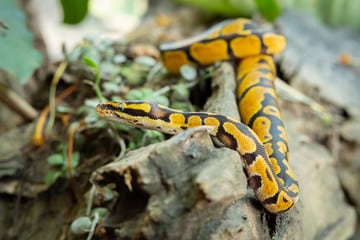The Ball Python is a type of snake that is found in Africa. They are non-venomous and can grow up to six feet long. They are typically a light brown color, but can also be black, yellow, or even green. They are known for being docile and friendly snakes, making them a popular choice for pet owners. If you own a Ball Python, here are some facts about them that you should know.
1.) Their name comes from their tendency to curl into a ball when they feel threatened. When the snake feels like it is in danger, it will roll up into a ball instead of trying to escape like other snakes would do. If this doesn’t work, the snake will also shake its tail to make a loud rattle noise. This type of behavior is uncommon in most snakes and makes the ball python unique compared to other species.
2.) The lifespan of a ball python can range from fifteen to thirty years, making it one of the longest living pet snakes that you can keep as a pet. This is one of the reasons they are so popular among snake owners.
3.) Ball pythons are constrictor snakes, meaning that they will wrap around prey to suffocate it before eating it. They eat small mammals like rats and mice, but will also sometimes eat bats or birds if they can catch them.
4.) Ball pythons are nocturnal, meaning that they will be active at night and sleep during the day. This is a lot different from other snakes, who prefer to be active during the day and sleep at night.
5.) Ball pythons have an excellent sense of smell which helps them to find prey even in dark places where there is little light. They can also sense heat from their prey through special receptors located in the skin of their head, which helps them to find warm-blooded prey better.
6.) Ball pythons are excellent swimmers and climbers, despite being a large snake that is typically found on land. This ability to swim and climb makes it easy for the snake to find and catch prey in the wild.
7.) There are many different color mutations of ball pythons, including albino and white ball pythons. The colors of the snake depend on how dominant or recessive a certain gene is in determining its appearance.

